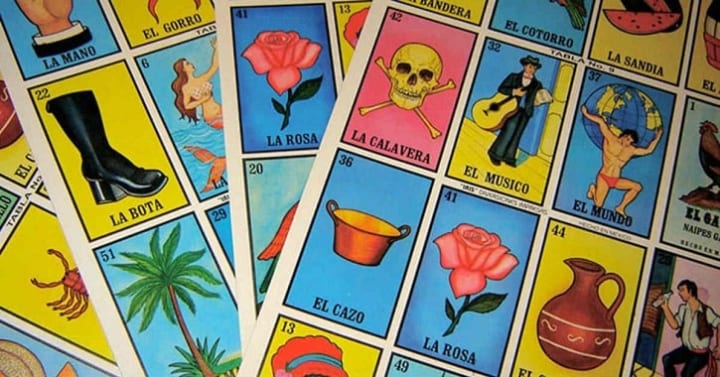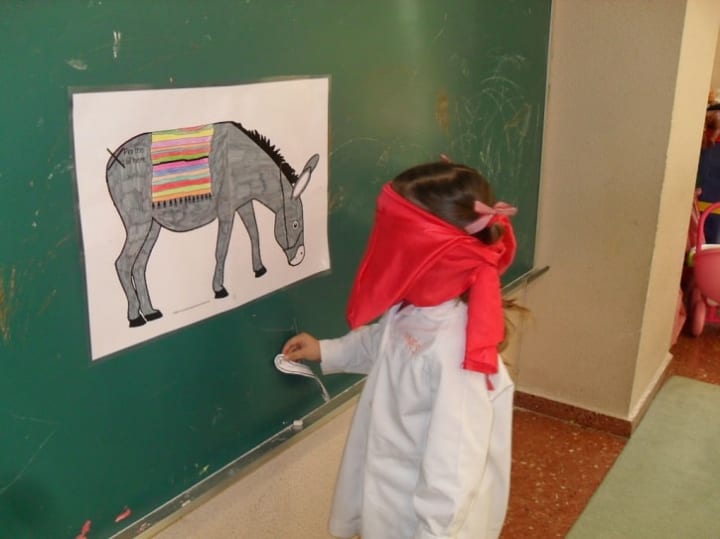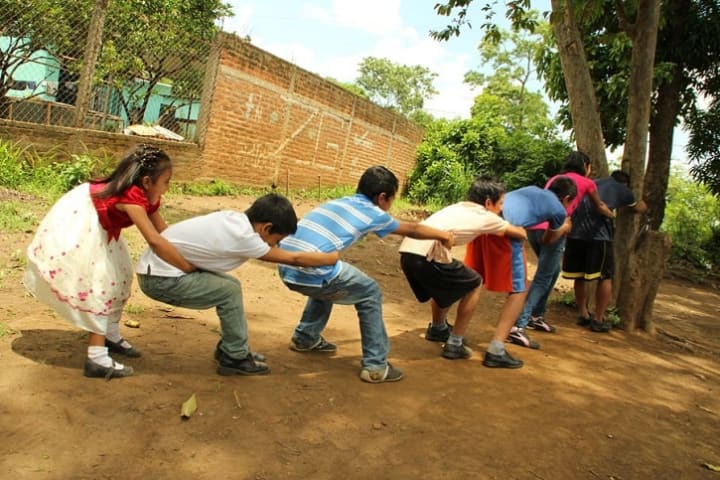10 traditional Mexican games with rules and instructions
Whether you're a teacher, parent or just looking for new games to have fun with your friends

1. Atrapa el sombrero

This is one of the most exciting traditional Mexican games for children. Since you will embark on an exciting "fight" against all your friends, with the aim of stealing their hat.
If you can get some Mexican hats to highlight the traditions and customs of Mexico, much better!
Instructions
As you can imagine, for this game you and all the participants will need to have a hat, but don't worry, it doesn't necessarily have to be a cloth or leather hat. A hat or a paper cone will work just as well.
Next, each of the participants must tie their hat behind their back, take an arm's length from their closest partner and wait for the music to start.
When the music starts, the participants will try to take the hat of their other game partners without stealing theirs.
Laughter and fun are guaranteed with this little game.
Rules
The game ends when there are only 2 participants left, who will be declared the winners.
If your hat is taken away, you are out and must sit somewhere away from the action.
It is forbidden to touch your hat.
If your hat falls off without anyone touching it, you're also out.
Have fun!
2. Lotería mexicana

The boot! The Rose! The drunk!…. Without a doubt, this is the most famous traditional Mexican table game of all time.
Although its origins date back to the beautiful Italian lands, its history in Mexico began when the European upper classes brought this game during the conquest as a form of entertainment.
But it was not until the Mexican war of independence (1810), that this game became a Mexican tradition when it was played by the soldiers of its army.
Instructions
For this game you will need small cardboard with a mixture of figures, a bag containing these cut-out figures and a character whom we will call "screamer" who will be in charge of mentioning each of the figures that he takes from the bag out loud.
The game begins when everyone has selected a card and ends when the first player marks the last figure on their card.
Rules
Each player chooses a card/board at random.
A small object (beans, stones, etc.) is used to mark the figures or cards drawn.
The screamer starts the game by drawing from the bag and naming the first figure.
If the figure is on any table of any of the players, said players must mark it.
The winner is whoever completes all the figures on their cardboard/board and shouts “Lottery!”.
3. Encantados

Playing the game of the enchanted was and is one of the favorite customs of children in Mexican schools because they only need their legs to play.
It is believed that this was the game that gave rise to a more recent game "cops and robbers" but we will talk about it later. For now, here are the instructions to play this traditional Mexican game:
Instructions
The participants are divided into two teams, a coin is tossed into the air "flown", to see who is chasing their teammates from the other team. If he touches someone, he must remain stopped, "enchanted" until another player touches him again and disenchants him.
Hungry? Get to know the 50 most delicious foods and drinks in Mexico. Click here!
In some versions of this game, there is a lair where the "victims" can be protected from the charmer. The latter can force victims out of hiding by yelling at the top of their lungs: "At three o'clock the base burns, one, two, three!"
Hearing this scream, the victims must run away and dodge all the enchanter's attempts to avoid being "enchanted".
Rules
A player can only be disenchanted if another player on his team touches him.
It is not allowed to stay with a player on your team that is enchanted for a long time.
The team that charms all the players on the opposing team wins.
4. Escondidas o escondite

This is one of the best traditional Mexican games to play outdoors. Because if you have a wide space and a multitude of places to hide, you will be guaranteed several minutes of fun.
Although the origin of this game is unknown (some believe that it was the Chinese and others the ancient Greeks who invented it) it is something that does not interest children at all, because when you see them play… they will make you want to hide yourself as well.
Instructions
The instructions for this game are very basic: a boy or girl "carries" her, and must count out loud to a number agreed by all the participants while she is facing a wall and with her eyes covered.
While the one who is carrying her is counting, the other children must run to hide and while they are looking for them, they must take advantage of any opportunity to return to the starting point (the place where the one who is carrying her was counting), touch the wall and shout “saved! !”.
The boy or girl carrying her must also run to that starting point whenever she finds another player to catch.
Rules
It is not allowed to wait behind the person who “carries” her while she is counting.
It is not allowed to divulge the hideouts of the other players.
The next to "carry" her is selected from among the players who couldn't save themselves.
If the "carrier" fails to catch anyone, he carries her again.
5. Ponle la cola al burro

If you are a teacher or simply do not have a place big enough for all your students/children/kids to participate, this traditional Mexican game will be perfect for you.
Of course, we warn you that you should prepare yourself with at least one drawing of a burrito on cardboard and a piece of paper that will work as the tail of the burrito.
Instructions
Create a figure of a burrito or donkey without a tail and stick it on a wall at a height that players can reach without much effort.
Now make a small tail with a bit of glue on the end so players can attach it to the donkey picture you just created.
Once all the material is ready, select one of the players at random and cover his eyes with a handkerchief, if you want to make it a little more difficult, you can give him a reasonable number of laps so that he feels a little disoriented.
While the player tries to put the tail on the burrito, the other players or spectators can help by giving instructions on how to put the tail on.
Without a doubt, this is one of the traditional Mexican games that can be enjoyed by both children and adults.
Rules
The player only has 1 chance to attach the tail to the donkey.
The first player to place the tail in the correct spot wins.
Players are not allowed to touch the handkerchief over their eyes.
6. Arranca cebollitas

We continue with the traditional Mexican patio games or to enjoy them outdoors and this time it is the turn of the “arranca cebollitas”, a game that will test the strength of all the players.
We recommend that if you are going to play this game, do it carefully, because the excessive use of force can hurt other players. So remember, it's just a game and its only purpose is to give you a fun time with your friends.
Instructions
For this game you will need a tree, lamp post or whatever for the first player to hold on to. Then, the other participants must make a queue behind this first player holding one after another with their hands on the waist.
Do you feel brave? Meet the darkest legends of Mexico.
Once the "onions" are ready, it's time for the "starter" to do his thing and start the game.
The starter must try to start each of the participants from the row they made, using only the strength of their arms. The other participants must do their best not to be ripped off and thus not be eliminated from the game.
Rules
Every time the starter manages to pull an onion, without pushing or hitting, it is eliminated, and so on until he manages to reduce his opponents to just one.
If the picker fails to pick all the onions, the onions win the game. Otherwise, the winner will be the starter.
The onions can only be attached to the waist of the other participants.
7. Carrera de carretillas

If you didn't get tired of the last game, we promise you that you will with this one.
Wheelbarrow racing is one of the perfect traditional Mexican games for outdoor activities, since it requires nothing more than the willingness of the participants to get a little dirty.
Instructions
Organize all the participants in pairs and ask them to choose who will be the “human wheelbarrow” for the race.
Once the participants are organized, line them up at the starting point with a distance of at least 2 meters between each participant so that they do not get hurt. The participant who will be the wheelbarrow must remain lying down in front of his partner who will carry his feet.
When you blow the starting whistle, the players who are standing must grab both legs of their partner and walk as fast as they can to the goal. When they reach the finish line they must change positions and return to the starting point.
The first couple to com remain lying down in front of his partner who will carry his feet.
When you blow the starting whistle, the players who are plete the circuit wins the race.
Rules
The couple that is "walking" with their hands should never touch the ground with any other part of their body.
The person who is standing carrying the other person, at no time may let go of the other person's feet.
They will have to arrive yes or yes to the line that we will mark at a distance to be able to exchange roles.
The person below will not be able to lower their feet until they cross one of those painted lines.
8. Policías y ladrones

According to the history of traditional Mexican games, it is said that this game originated as a variation of "Enchanted", it is likely that a group of children tired of always playing the same, proposed some small changes, which led them to the new game. : Cops and robbers.
Whatever the story, what matters is that this game is a favorite of all children to play with their friends outdoors.
Instructions
To play this game you will need to divide the group of participants into 2 teams, the first team will be the "policemen" and the second will be the "thieves".
Then you must define a place where the captured thieves will be taken. Yes, a jail. At the beginning of the game, all the police officers must wait in this place, while they count to 10 and the robbers take the opportunity to run as fast as they can.
The game ends when the policemen manage to catch all the robbers or the time (previously defined) comes to an end. If the latter happens and there are still free thieves, the thieves win the game.
Rules
A thief is caught when he is touched by a policeman.
A thief can be released from jail if another thief who is free touches him.
The game ends when all the thieves are caught or time runs out.
9. La gallinita ciega

It is said that the history of this game began a thousand years ago in France.
Legend has it that this game is practiced because a very brave French knight named Collin Maillard, was blinded one day of fighting and without letting go of his sword he did not want to be cured, but he continued fighting until he died.
Then the King ordered that in game fights, which were called tournaments, a knight should always go out to fight blindfolded, so that the people of France would not forget the great courage shown by said knight.
It is probable that during the conquest, the Europeans brought this game to Mexico and it was linked to the traditions and customs of this people.
Instructions
In the first place, you must choose who will wear the blindfold, that is, the one who will play the role of blind man's hen and must find the rest.
Once the blind hen has been selected, a handkerchief should be placed over its eyes, so that it cannot see anything and it can be turned around a few times to confuse it a little.
The other children will be placed around the little hen and she will try to catch them, once she catches one she must recognize it only using her hands.
Rules
If a player is caught and recognized by Blind Man's Hen, they are eliminated from the game.
Eliminated players can help Blind Man's Hen with their voices and prompts to catch the other players.
The game is over when the little hen catches all the players or time runs out.
10. Jarabe tapatío

No, we are not talking about the folkloric dance of the state of Jalisco, but about one of the most traditional games in Mexico and that all good Mexicans have enjoyed at least once in their lives.
And if you don't know how to dance, don't worry! It is to learn to dance that this game was invented, so lose your embarrassment and enjoy it.
Instructions
Organize all the participants in a circle holding hands and put on Mexican music (it does not have to be Jarabe Guadalajara) and all the participants must move in a clockwise direction while raising their hands.
Then the name of a child who has to go to the center of the circle and dance is called. This dynamic is repeated until each of the children has performed her dance in this game.
Rules
The only rule of this Mexican game is that everyone must participate at least once.
About the Creator
diego michel
I am a writer and I love writing






Comments
There are no comments for this story
Be the first to respond and start the conversation.